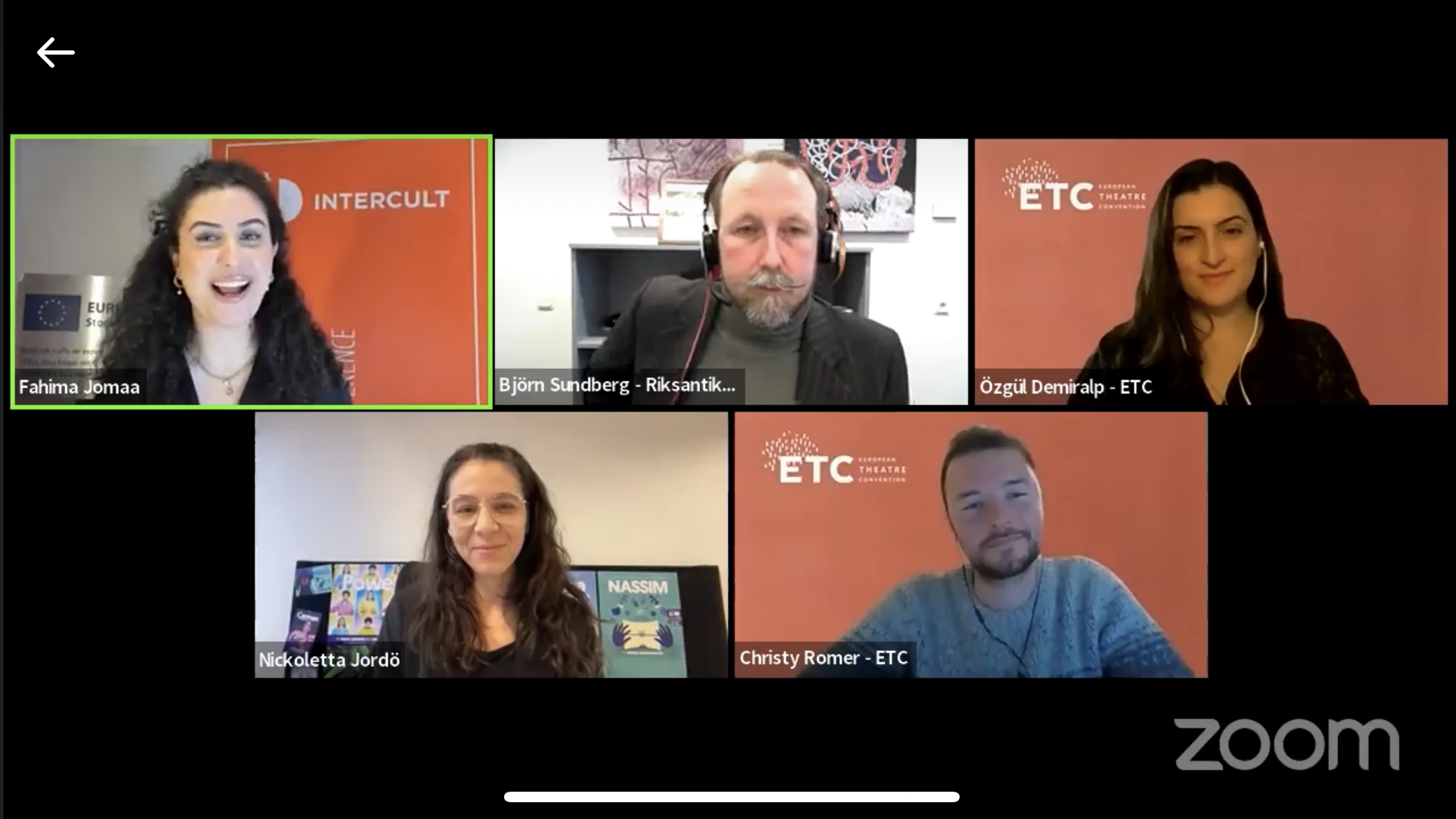On Wednesday March 22, Intercult & Europe Direct Stockholm organized a webinar on cultural and digital innovation. The webinar had three representatives from; European Theater Convention, The Swedish National touring theater and Swedish National Heritage Board.
WATCH LIVESTREAM HERE!
Özgul Demiralp, Digital Communications officer and Christy Romer, Communications Manager represented the European Theater Convention.
From digital strategy to digital practice. ETC is the largest network of publicly funded theaters in Europe. ETC has 55 members from 30 countries. The aim is for all these countries to work together to connect theater. ETC is also fighting for a stronger theater sector. Why are digital activities fundamental was a question that received attention? Because it is practical when working with members from all over Europe through, for example, zoom, webinars and online events. ETC gave the example of their project Young Europe IV where they work with 9 theaters from 7 different countries to make new productions in school classes. Those who do not have time or money to go to the theater, why not create an artistic work in another form (digital) that benefits many in society. ETC uses various online tools such as the online library on their website where they state that they do not see digital theater as a replacement for traditional/physical theater, it is another tool that can be used to reach a wider audience.
Björn Sundberg, Program manager, Digital transformation in the museum area represented the Swedish National Heritage Board.
Björn Sundberg began his presentation by discussing the music industry and how the development went from us buying physical media with music (CDs, cassette tapes) to online stores such as Apple, Napster and Spotify. Björn used this example to apply the same metaphor to people who work within the cultural heritage sector. Working with cultural heritage can be found in the knowledge industry. Today, when we search for information, we often use the Internet as support. The museums must therefore know how to collaborate with the public on the internet, create and support more digital content and work towards more services developed for a broad target group.
What do museums and our cultural heritage benefit from using digital tools and online options?
On the Internet, traditional boundaries do not have the same effect as they do in physical reality. For example, museums today can collaborate, create and combine larger collections of the local cultural heritage. Museums in the Northern part of Sweden can, for example, instead of only telling the local stories, talk about objects and history from several different museums and places in the country and- or internationally. This can provide a holistic approach to cultural heritage. Björn Sundberg also spoke about how the internet’s possibilities help the sector reach new target groups without having to spend a huge amount of resources on marketing or financing. Something that was emphasized during the presentation was that digital innovation is a significant part for the future and development of our living cultural heritage but will not replace the physical.
Nickoletta Jordö, Head Market & Audience, represented The Swedish National touring theater.
The Swedish National touring theater work with online tools and digital innovation has partially developed a print portal where their marketing team adds current production launch images, which local associations go in and order their own customized posters directly from the printer. The Swedish National touring theater is also working on developing projects, such as a new performing arts format that they call “three rooms” and it is played interactively and experienced simultaneously in three interconnected stages in Norway, Sweden and Finland. In these three countries, there are actors on each stage acting with the actors of the other two countries projected on transparent screens. The audiences in the three countries are also digitally connected. Low-latency technology enables the creation of performing arts over large geographical distances with minimal delay.
Streaming performing arts (The Swedish National touring theater play) that was created during the pandemic was also a tool and platform for the audience to have access to high-quality performing arts.
Summary
After this conversation, we can state that digital innovation in the cultural sector do not replace the physical meeting between experience and audience/spectators. Digital tools, instead create accessibility to a wider audience and can include more people to take part in the cultural experiences. The digital tools have also created new perspectives on how, for example, drama, performing arts and cultural heritage can be experienced today. An important part of digital development from a global perspective is the collaborations, both at local and international level, that digital tools enable and will continue to develop.
Many thanks to fantastic presentations and cooperation!
